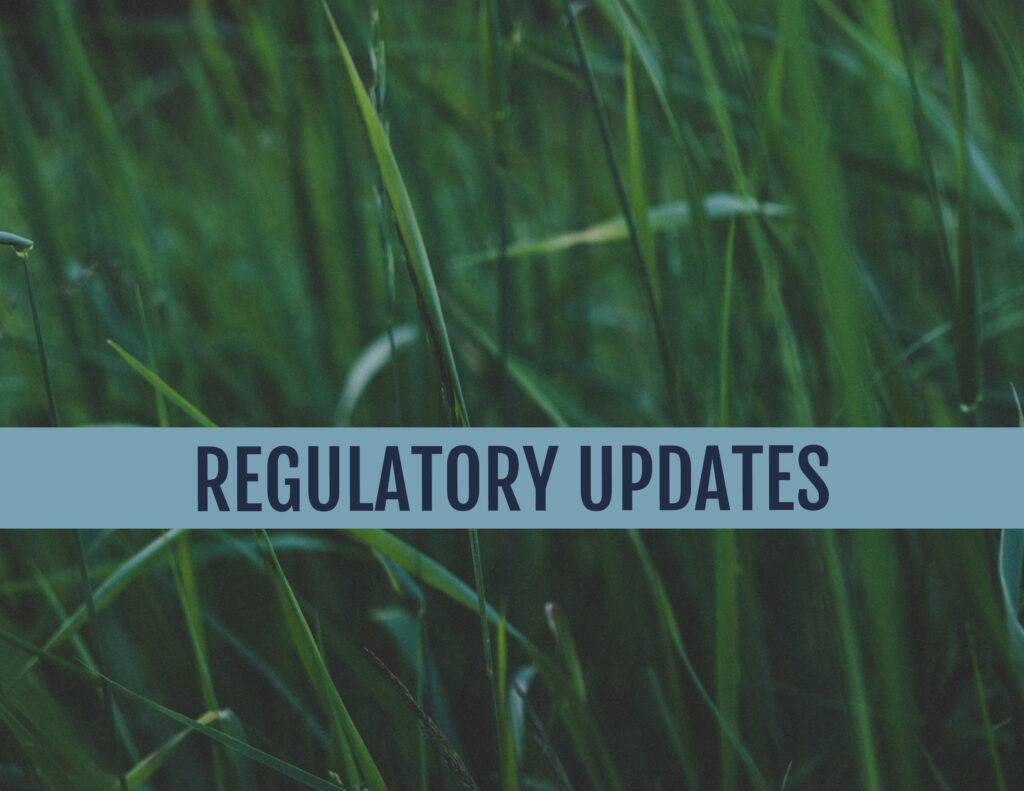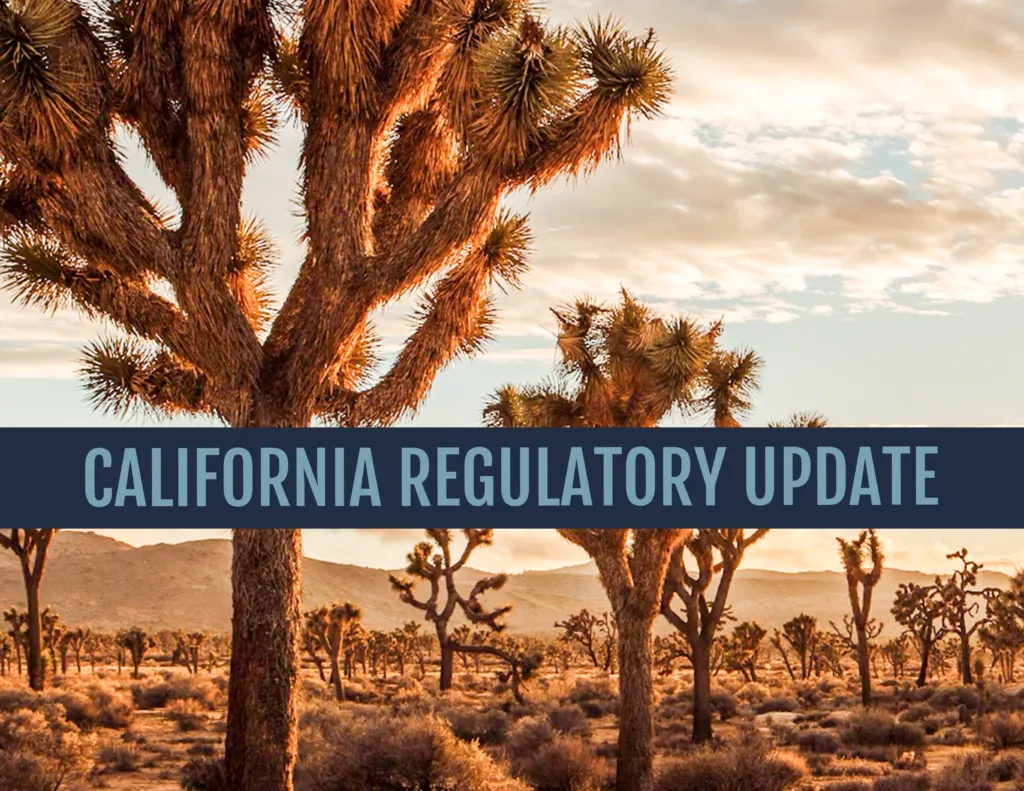
During the first quarter of 2022, there were several legal and regulatory developments involving the waters of the United States (U.S.) definition and implementation of the Clean Water Act (CWA). In addition, two final directives were issued by the U.S. Forest Service (USFS) and two notices were issued by the State Water Resources Control Board (State Water Board). Summaries of each of these developments are provided in the following subsections.
DEFINITION OF WATERS OF THE UNITED STATES
Approved Jurisdictional Determinations
Citing a recent court order that vacated the 2020 Navigable Waters Protection Rule (NWPR), the U.S. Army Corps of Engineers (USACE) announced on January 5, 2022, that Approved Jurisdictional Determinations (AJDs) issued before August 30, 2021, are no longer valid for new permit decisions. An AJD is the process used by the USACE to make a determination on the presence or absence of “waters of the U.S.” within the review area. Per a 2005 Regulatory Guidance Letter, AJDs are generally valid for 5 years unless new information warrants revisiting the determination prior to the expiration date.
Previously, the USACE considered AJDs completed under prior regulatory regimes to be valid. However, for any pending applications or applications that have yet to be filed, the USACE will not rely on AJDs issued under the NWPR to make permit decisions. Instead, new permit decisions will be pursuant to the pre-2015 regulatory regime. Applicants that were intending to rely on a NWPR AJD will either need to receive a new AJD under the pre-2015 regulatory regime or they can prepare a draft preliminary JD to expedite the permitting process as it presumes that the applicable water features fall under USACE jurisdiction. “Standalone” AJDs, which are not associated with a permit action, will not be reopened during their 5-year term unless the criteria for a revision are met.
Supreme Court Hearing
On January 24, 2022, the U.S. Supreme Court agreed to hear Sackett v. EPA in order to establish “the proper test for determining whether wetlands are ‘waters of the United States’ under the Clean Water Act.” This case is a long-running dispute between the Sackett family and the U.S. Environmental Protection Agency (EPA) and USACE over whether CWA jurisdiction extends to wetlands occurring on the Sacketts’ property in Idaho. The district court and the Ninth Circuit upheld the EPA’s authority to regulate the Sacketts’ property by applying Justice Anthony Kennedy’s “significant nexus” test from Rapanos v. United States. In 2011, the Supreme Court reversed the Ninth Circuit decision and determined the Sackett family had the right to challenge a compliance order from the EPA.
The Sacketts are now challenging the basis for the EPA’s compliance order and argue that the EPA and the USACE inappropriately asserted jurisdiction over wetlands on the Sacketts’ property by using Justice Kennedy’s “significant nexus” test instead of Justice Antonin Scalia’s “relatively permanent and continuous surface connection” test (also from Rapanos v. United States). Because the Ninth Circuit upheld the position of the EPA and USACE, the Sacketts are bringing the case before the Supreme Court again. More information about Justice Kennedy’s test and Justice Scalia’s test can be found in our December 2021 blog post.
The Supreme Court will hear this case during the October term, and the outcome will likely affect the new regulatory definition for the “waters of the U.S.” that the EPA and USACE are developing in a proposed rulemaking.
Regional Roundtables
Despite the upcoming Supreme Court hearing, the USACE and EPA are moving forward on their proposed rulemaking to revise the definition of the “waters of the U.S.” As part of this process, on February 24, 2022, the agencies announced the selection of 10 regional roundtables intended to highlight diverse perspectives that will be hosted over the spring and summer.
The 10 selected roundtables are:
- Amigos Bravos (Southwest);
- Arizona Farm Bureau (Southwest);
- Cahaba Brewing (Southeast);
- California Farm Bureau (West);
- Kansas Livestock Association (Midwest);
- National Parks Conservation Association (Midwest);
- Natural Resources Defense Council (Northeast);
- North Carolina Farm Bureau (Southeast);
- Regenerative Agriculture Foundation (Midwest); and
- Wyoming County Commissioners Association, Montana Association of Counties, and Idaho Association of Counties (West).
The final rulemaking will incorporate the comments filed in February, as well as feedback from the regional roundtables.
FINAL DIRECTIVES
Operating Plans and Agreements for Powerline Facilities
On February 10, 2022, the USFS issued a final directive to add Chapter 80 (Operating Plans and Agreements for Powerline Facilities) to Forest Service Handbook 2709.11. The directive establishes procedures for development and approval of operating plans and agreements that will provide criteria and guidelines for vegetation management, inspection, and operation and maintenance (O&M) of power line facilities on USFS lands. The proposed directive was discussed previously in our 2021 Q1 Update.
Vegetation Management Pilot Projects
On February 10, 2022, the USFS issued a final directive to add Chapter 2740 (Vegetation Management Pilot Projects) to the Forest Service Manual. The directive establishes procedures to approve vegetation management pilot projects on USFS land adjacent to power line or natural gas facility rights-of-way (ROWs). These pilot projects will allow utilities to conduct voluntary vegetation management (i.e., limited vegetation management activities that will have the least amount of disturbance to grounds and wildlife necessary to protect facilities from a wildfire) at a distance of no more than 200 feet (including both sides of a power line or natural gas facility) from a power line or natural gas facility or no more than 150 feet on one side of a power line or natural gas facility. The proposed directive was discussed previously in our 2021 Q1 Update.
NOTICE OF PREPARATION
Statewide Utility Wildfire Mitigation General Order
On February 2, 2022, the State Water Board issued a notice of preparation and a California Environmental Quality Act scoping meeting for a General Order[1] to permit waste discharges into waters of the state that are associated with electric utility O&M activities for wildfire management, as well as other O&M activities that ensure grid reliability and have the same potential effects on water quality as wildfire mitigation. This General Order is an effort to streamline the permitting process for wildfire mitigation activities mandated by Senate Bill 901, which was passed on August 31, 2018, and established a more rigorous wildfire mitigation plan process for electric utility companies.
The following O&M activities are proposed to be included in the General Order:
- vegetation management (e.g., trimming or mowing adjacent to existing facilities);
- post-fire response (e.g., hazardous tree removal);
- site access development/maintenance (e.g., grading or blading of access roads, repairs to drainage crossings and culverts along access roads);
- fire retardant or suppressant application (e.g., application of chemicals to prevent wildfires);
- staging areas and laydown yards (e.g., areas that support O&M activities);
- pole/tower repairs or replacement (e.g., repair or replacement of aging poles and towers);
- substation maintenance (e.g., repair or replacement of substation equipment);
- transmission tower maintenance (e.g., repair or replacement of tower components);
- structural conversion (e.g., conversion of a cylindrical pole to a lattice tower);
- line reconductoring (e.g., replacement of overhead conductor along existing facilities);
- undergrounding power lines (e.g., conversion of overhead power lines to underground power lines);
- boardwalk repairs or replacement (e.g., repair or replacement of boardwalks used to access existing facilities); and
- electrical utility infrastructure lowering, maintenance, replacement, or removal (e.g., updates to facilities due to age or site conditions).
The State Water Board held a public scoping meeting on February 18, 2022, regarding the Environmental Impact Report that will analyze the proposed General Order. The deadline for written comments on the scoping was March 4, 2022.
Information regarding this proposed General Order as it progresses through the California Environmental Quality Act process will be available here: https://www.waterboards.ca.gov/water_issues/programs/cwa401/statewide-utility-wildfire-mitigation-general-order.html
[1] This is formally referred to as Statewide Waste Discharge Requirements and CWA Section 401 Water Quality Certification for Electric Utility Operations and Maintenance Activities Related to Wildfire Mitigation and Other Similar Activities.
NOTICE OF OPPORTUNITY FOR PUBLIC PARTICIPATION
Statewide Construction Stormwater General Permit Reissuance
On March 30, 2022, the State Water Board issued a Notice of Opportunity for public comment and workshops regarding the proposed reissuance of the Statewide Construction Stormwater General Permit. Pursuant to the CWA, discharges of stormwater to waters of the U.S. from construction projects that encompass more than 1 acre of soil disturbance are regulated by a National Pollutant Discharge Elimination System (NPDES) permit. The State Water Board adopted the existing statewide NPDES Construction Stormwater General Permit in 2009 (Order 2009-0009-DWQ), and it was amended in 2010 and 2012 (respectively, Order 2010-0014-DWQ and Order 2012-0006-DWQ).
The draft permit was previously issued on May 28, 2021. The proposed statewide Construction Stormwater General Permit includes the following:
- new requirements to implement existing total maximum daily loads adopted by Regional Water Quality Control Boards into applicable basin plans;
- new requirements to address discharges from passive treatment technology uses and dewatering activities;
- new eligibility criteria for permit enrollment through a Notice of Non-Applicability;
- updated to the existing Notice of Termination process;
- requirements to implement the California Ocean Plan and the Water Quality Control Plan for Inland Surface Waters, Enclosed Bays, and Estuaries, including the statewide Trash Provisions;
- updated requirements for demolition activities;
- updated water quality sampling requirements per the federal Sufficiently Sensitive Test Methods Rule; and
- updated monitoring and reporting requirements to address cost of permit compliance.
The proposed permit documents are located here: https://www.waterboards.ca.gov/water_issues/programs/stormwater/construction/general_permit_reissuance.html.
Written public comments are due on May 2, 2022, but are limited to certain revisions to the draft permit. A public workshop was held on April 12, 2022, and a workshop for the State Water Board will be held on April 19, 2022. For more details about the public comments and workshop, refer to the Notice of Opportunity. The State Water Board will consider adopting the proposed statewide Construction Stormwater General Permit during a State Water Board meeting on July 19, 2022. The proposed date that the permit will go into effect is July 1, 2023.
Active projects with existing coverage under the 2009 permit will have a 3-year transition period before being required to obtain coverage under the reissued permit by June 30, 2026.


